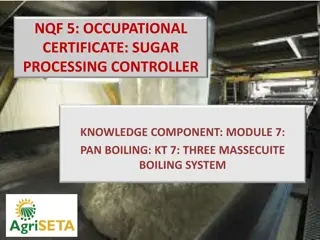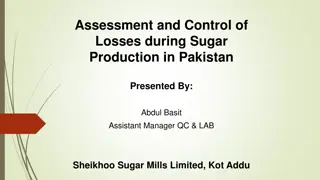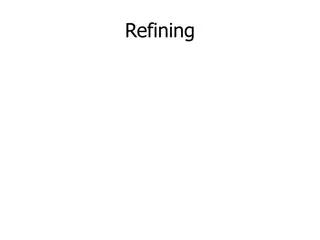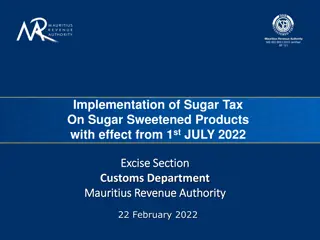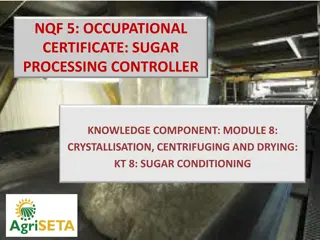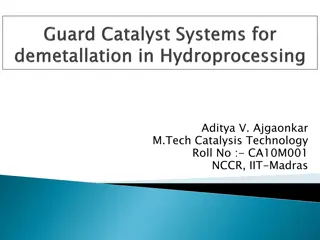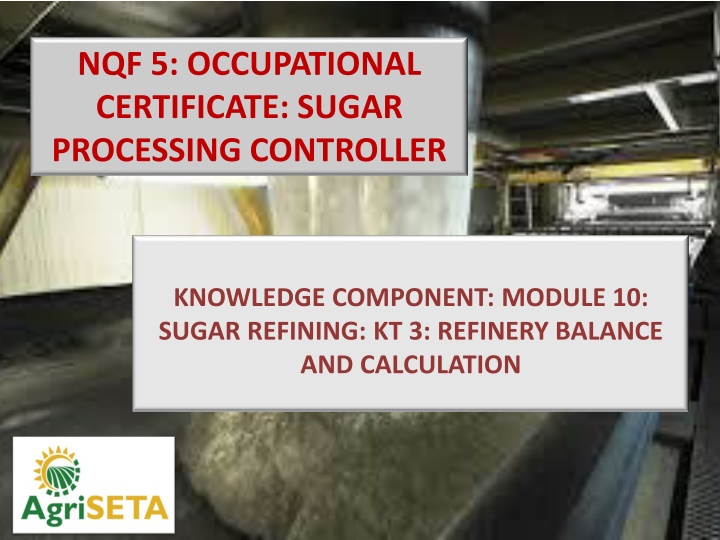
Refinery Performance and Yield Calculation in Sugar Processing
"Explore how impurity balances, yields based on conductivity ash, sucrose and color balances, and refinery performance assessment play crucial roles in sugar refining processes. Learn about calculating massecuite yield and overall refinery yield using conductivity measurements. Find out how sucrose balances account for raw sugar processed and assess refinery performance through color balances."
Uploaded on | 0 Views
Download Presentation

Please find below an Image/Link to download the presentation.
The content on the website is provided AS IS for your information and personal use only. It may not be sold, licensed, or shared on other websites without obtaining consent from the author. If you encounter any issues during the download, it is possible that the publisher has removed the file from their server.
You are allowed to download the files provided on this website for personal or commercial use, subject to the condition that they are used lawfully. All files are the property of their respective owners.
The content on the website is provided AS IS for your information and personal use only. It may not be sold, licensed, or shared on other websites without obtaining consent from the author.
E N D
Presentation Transcript
NQF 5: OCCUPATIONAL CERTIFICATE: SUGAR PROCESSING CONTROLLER KNOWLEDGE COMPONENT: MODULE 10: SUGAR REFINING: KT 3: REFINERY BALANCE AND CALCULATION
Refinery Performance It is difficult to arrive at accurate sucrose balances in high purity refinery products. Impurity balances are often used to assess performance.
Yields based on Conductivity Ash The impurity used is as measured by conductivity (CA). CA is determined for all streams and reported relatively to brix (CA % brix). The ash content stabilises from fine liquor onwards and is therefore useful in tracking crystallisation efficiency. Two formulae are in use: Massecuite yield Overall refinery yield.
Yields based on Conductivity Ash Massecuite yield = CA % Bx Run off CA % Bx Mcte CA % Bx Run off CA & Bx sugar x 100 An average massecuite yield of 46% is normal and figures around 50% indicate very good pan and centrifugal work.
Yields based on Conductivity Ash Overall refinery yield = CA % Bx Return syrup CA % Bx F. Liquor CA % Bx Return syrup CA % Bx sugar x 100 This yield ranges from 75 80% for 3 massecuite boiling systems and 80 90% for 4 massecuite boiling systems. Undetermined losses cannot be confidently stated where unmeasured material like sweetwater and dryer lumps are returned to the rawhouse.
Sucrose and Colour Balances An alternative scheme is to consider the yield of saleable product per unit of raw sugar processed. Sucrose balances are done to account for the sucrose entering the refinery. The balance involves: Inputs: Raw sugar, Other sugar Outputs: Refined sugar, Molasses and syrup, Speciality sugars Losses: Effluent, Filter cake, Packaging overweights, Condenser water The overall yield is broken down into process and packing yields. The process yield refers to how much product (refined sugar and others) could be produced from the raw sugar, the packing yield refers to the efficiency of the packaging of the sugar.
Sucrose and Colour Balances (cont.) Refinery performance can also be assessed by colour balances. A typical colour profile across Hullet Refineries is (figures are loss or gain in colour): Melting Carbonatation Ion exchange Evaporation Crystallisation +15% -50% -60% + 5% -92%



